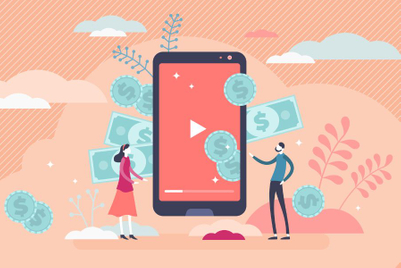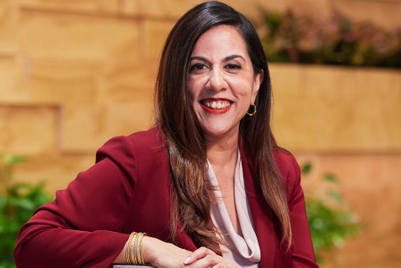
Nobody likes getting ghosted.
When someone stops responding in any relationship, it can create turmoil. If a creator ghosts a brand during a collaboration, that brand loses what it invested in the relationship and damages its reputation with a broader network of creators.
To a marketer, it might seem like a paid partnership is incentive enough for a creator to successfully complete a project, but that’s not always the case. Creators large and small have different priorities that don’t always align with what brands offer, and it’s common for creators to move on mid-project if the work isn’t meeting their expectations.
Brands need to take the time to understand the priorities of the creators they’re working with and must commit to a collaboration that ensures those needs are met and respected throughout.
Flexible, fair and timely payment
A flat fee is the gold standard for compensation, but creators are willing to work with brands within other structures if there is a clear up-front agreement.
Brands that are flexible with payment structures, timing and adjustments will see more engagement with creators. Some creators get turned off by percentage of commission offers, while others are comfortable accepting a small flat fee combined with a performance bonus.
Compensating creators on time is critical to creating loyalty, and offering opportunities for creators to counter or negotiate an initial offer can dramatically improve response rates.
While gifting is great for building creator relationships, it is not the same thing as a payment. Marketers should ensure there are “no strings attached” so as not to suggest an alternative for compensation. And if the creator does decide to post about your brand in exchange for a free product, they must still disclose that the content is a paid collaboration or ad.
Creators care about more than money
Money talks—to a point. While creators care about compensation, each has a range of other priorities they consider when deciding to work with a brand. If those priorities aren’t met, at some point, they’ll call it quits.
Creative integrity: Creators are driven by a love for their work. Each has an artistic process that matters to them. Some are willing to compromise on their voice or approach, but more often than not, granting partners full creative control (with brand safety limits!) is a must. Brands need to accept that while creators love to collaborate, they want creative license.
Competing interests: A single brand partnership is hardly the only thing on an influencer’s plate at a given time. They are juggling other projects and sources of income. Many have full-time jobs, families and other priorities that compete for their time, and they need flexibility to manage it all.
Timing: If a brand imposes unrealistic deadlines, creators may decide the partnership is not worth it. Practical performance expectations are critical. Depending on the platform, goal and partner, performance data may be ready to review at different times. Leave room in your timelines to ensure access to the most accurate metrics.
Communication: Ghosting goes both ways. A brand isn’t going to get loyalty with a generic offer. Compensation and project expectations must be clearly communicated, but communication doesn’t end there. Creators want to be able to work with the brand directly and have a dialogue throughout the process. True collaboration requires real people working together, providing input and feedback to make the project a successful team effort.
Quality products: Creators know their personal brand, as well as what matters to their followers. Good creators will only engage in partnerships that promote quality products and brands with similar values.
Aligning with creators and avoiding pitfalls
In an ideal world, creators would get everything they want from brand partnerships. Brands would pay generously, give creative leeway, have a flexible timeline and provide great communication.
While brands are often strapped for budget, time and resources, there are some strategies they can use to ensure they’re closing out partnerships on a positive note.
While brands are looking for quality work, creators are more focused on understanding their expected performance. Decide on KPIs up front and add them to the contract. Brands shouldn’t say that they want a high-quality video post if they are actually measuring coupon downloads or purchases.
Offering creators examples of successful collaborations can help, along with sharing mood boards or content “inspo” to relay the desired end result. Similarly, brands shouldn’t just share a “go live” date, but instead create a timeline that outlines deadlines for concepts, storyboards and more.
Brands should also be open to negotiate timelines. A short conversation could result in an agreement that works well for both parties. Perhaps certain elements of the collaboration are especially important to the creator, such as how the product is presented or used in the content, while other elements of the brief are less of a priority. Some give-and-take will allow the creator to take ownership and work more effectively.
Open and regular communication is a key indicator of a successful partnership. Creator Jessica Turner told me that some of her favorite brands to work with have influencer marketing managers who make her feel valued. She especially appreciates when a brand contact gives her their cell phone number. She recognises that people should feel free to create and enforce boundaries, but she prioritises brands who go the extra mile to make sure she has what she needs to be successful and to remind her that she's a valued partner.
Brands tend to see better performance when they provide clear expectations and examples up front and are committed to working with creators as respected business partners rather than eager order-takers.
Working hand-in-hand with creators and allowing for flexibility and compromise will reduce ghosting and make for a high-impact, lasting partnership.
Olivia Savage is senior marketing strategist, creator growth and engagement, at Impact.com.



.jpg&h=334&w=500&q=100&v=20250320&c=1)



.png&h=334&w=500&q=100&v=20250320&c=1)
.png&h=334&w=500&q=100&v=20250320&c=1)


.png&h=334&w=500&q=100&v=20250320&c=1)





.jpg&h=268&w=401&q=100&v=20250320&c=1)
.png&h=268&w=401&q=100&v=20250320&c=1)

